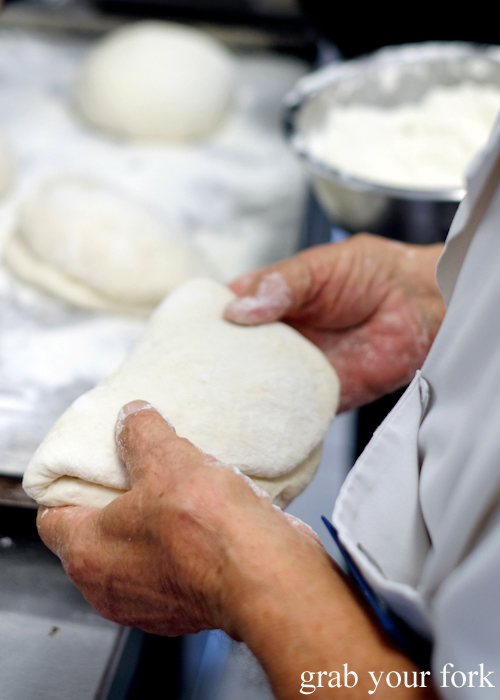
So you think croissants are from France? Think again. It's one of the first misconceptions our teacher, Laurie Donnelly, clears up at the start of our bread making class. Croissants originated in Austria, not France. And French fries? They're from Belgium. And another surprise? Sydney TAFE holds fee-free government-subsidised classes. Today's Artisan bread making class is one of them.
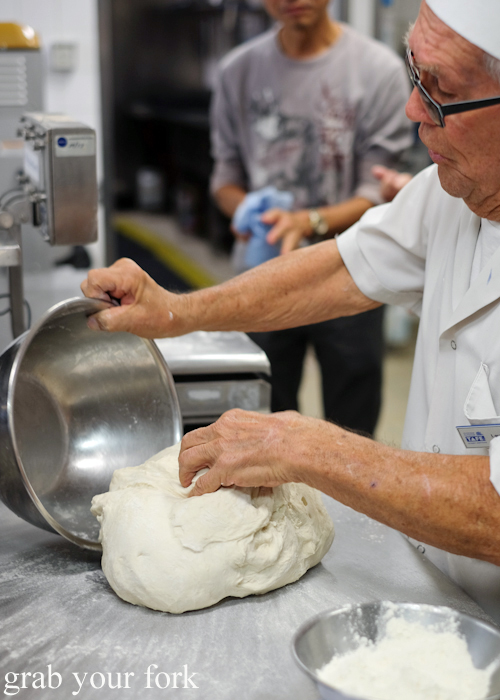
Our teacher for the day, Laurie Donnelly portioning dough
There are twelve of us today, assembled on a Saturday morning at the Ultimo campus. Laurie talks us though the meaning of artisan bread, a skill of making bread by hand. "In the old days," he says in a thick English accent, "all bread was artisan. We didn't have machines making them."
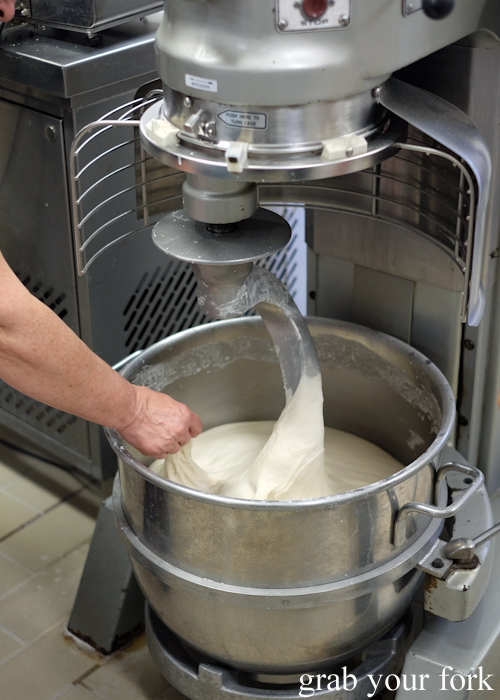
Making bread dough in the commercial mixer
One of the biggest bread making tips from Laurie is the importance of water temperature. Too cold and it will impede or kill the yeast. The optimal water temperature is 13C. He also says the best bread flour comes from Canada, prized because of its high protein (about 12-14%).
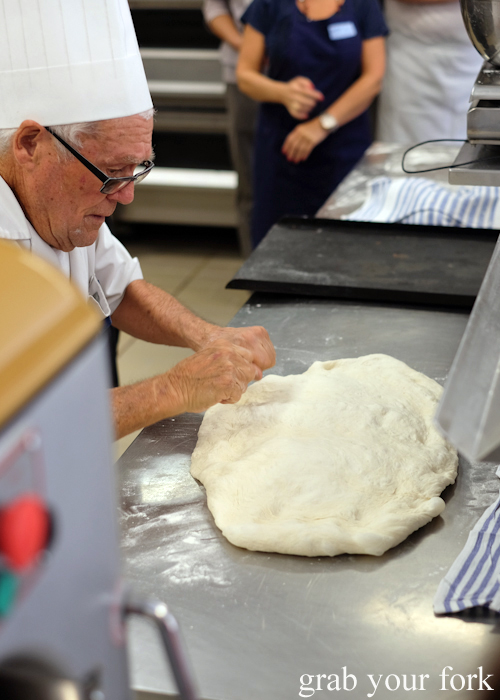
Laurie demonstrating how to knock down the dough
Over the course of the day we will proof and shape seven different breads before baking them in commercial ovens.
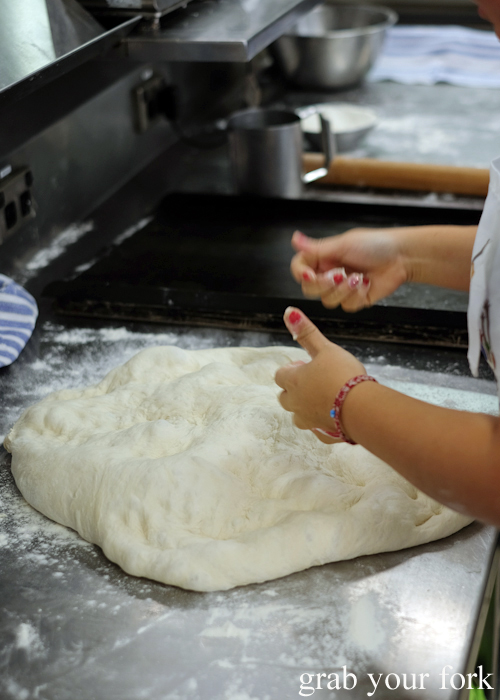
Knocking down dough
It's a hands-on class with students working in pairs at stainless steel workbenches.
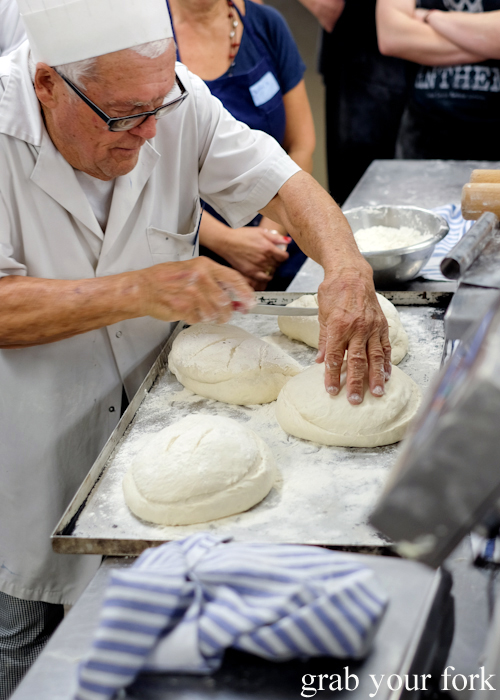
Scoring the dough for pagnotta, an Italian village loaf
As we progress through the breads, Laurie demonstrates how we need to knock down, fold, shape and score each bread.
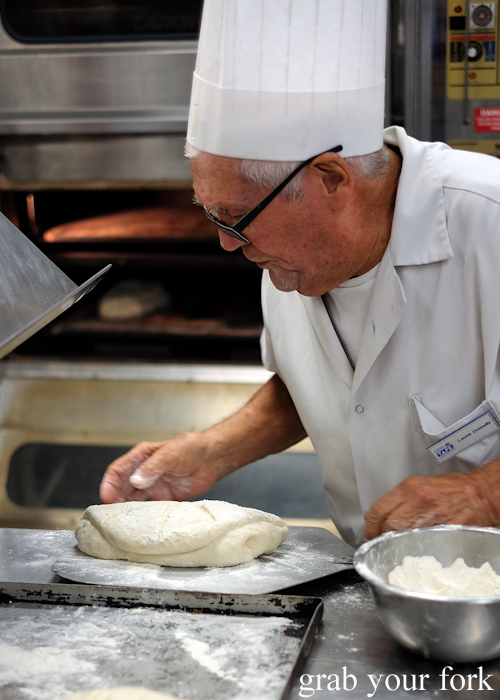
Tabatiere bread ready for the oven
The breads are transferred into the ovens using a pizza oven peel. The ferocity of the ovens, including the steam function and steam release valves, create major envy.
Laurie has another tip for home bakers: when your oven meets the require baking temperature, it should sit there for at least 30 minutes undisturbed to stabilise the temperature. That means when you open the oven to add your items for baking, the temperature is less likely to drop significantly, ensuring your bread will rise spectacularly.
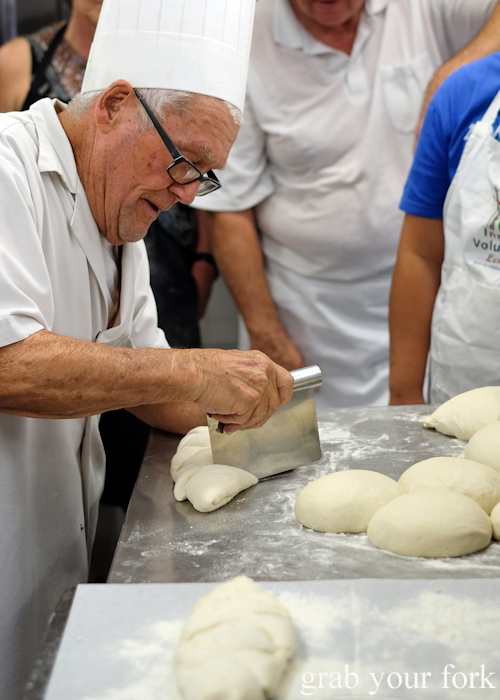
Making cuts into dough to make a zigzag loaf
We gently stretch dough into ciabatta, the Italian word for slipper that makes so much more sense when you're faced with the elongated dough shape. We use a commercial bread shaper that magically spits out rolled baguettes.
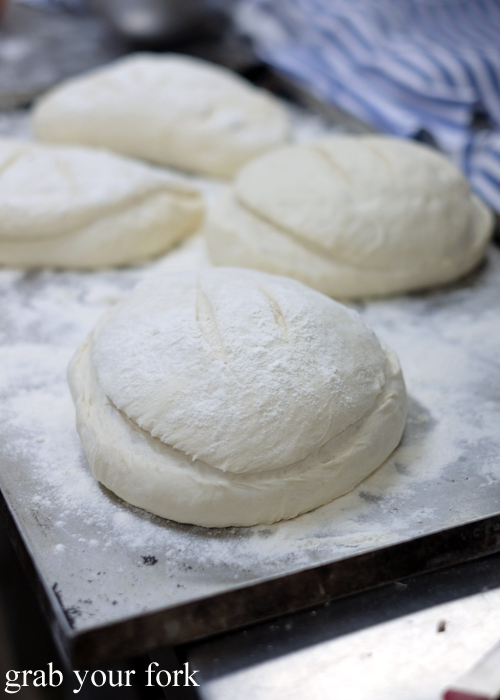
Pagnotta dough ready for the oven
Scoring the dough is more stressful than it looks, requiring surgical precision and emergency room speed, trying to make cuts that are clean, even and at exactly the right angle to allow puff without it collapsing.
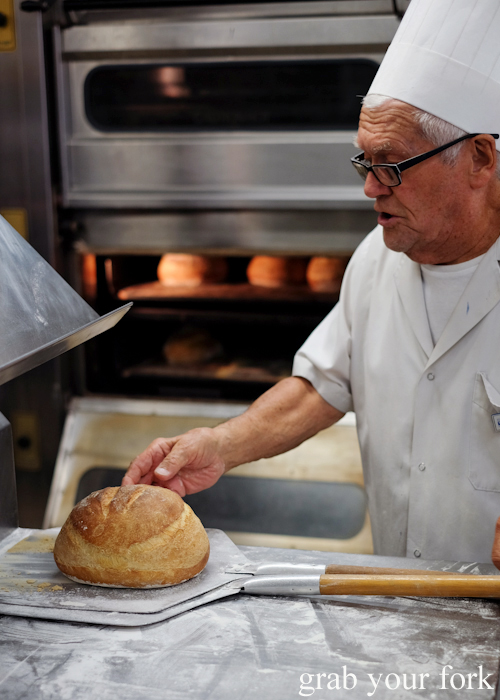
Golden baked pagnotta bread
But it works! Our breads emerge from the oven looking lofty, tanned and smelling incredible.
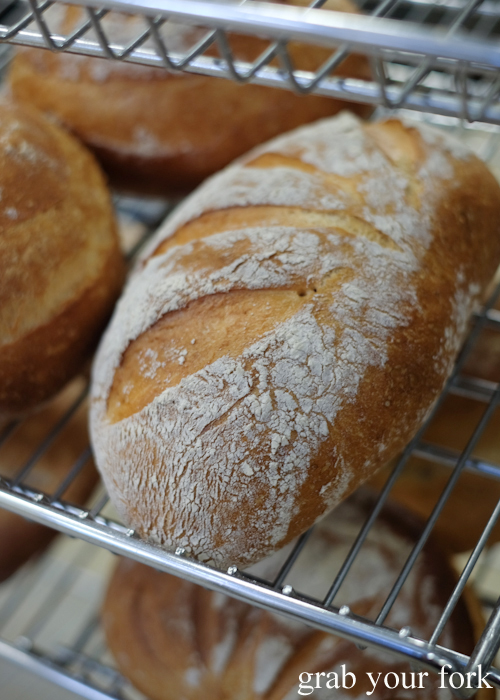
Baked tabatiere
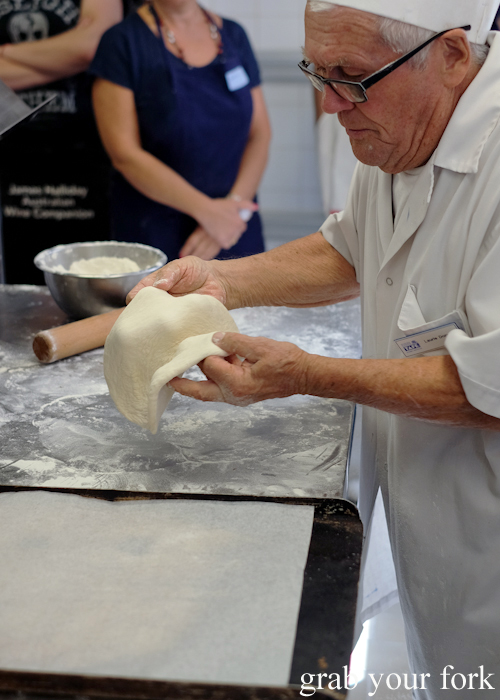
Pizza dough rolled out
Some of our dough is rolled out into pizzas for lunch.
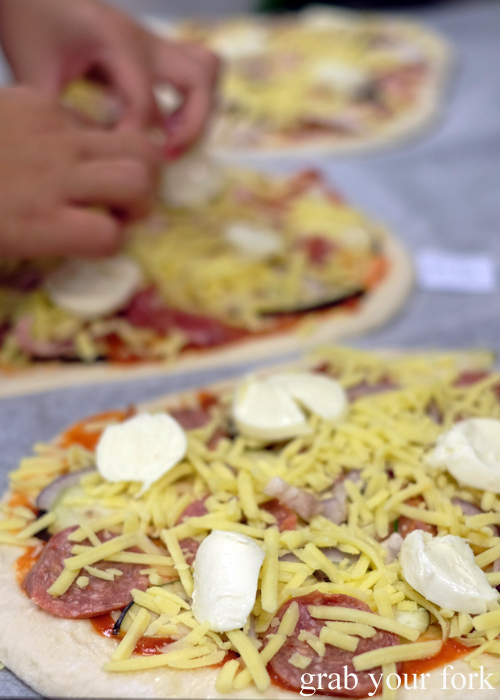
Assembling our pizzas with salami, mushroom, cheese and mozzarella
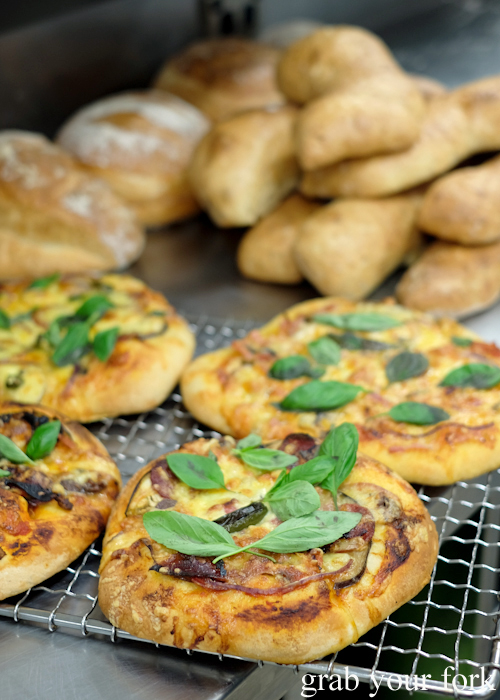
Pizzas ready for lunch
Freshly baked pizzas are just what we need after a long day of baking.
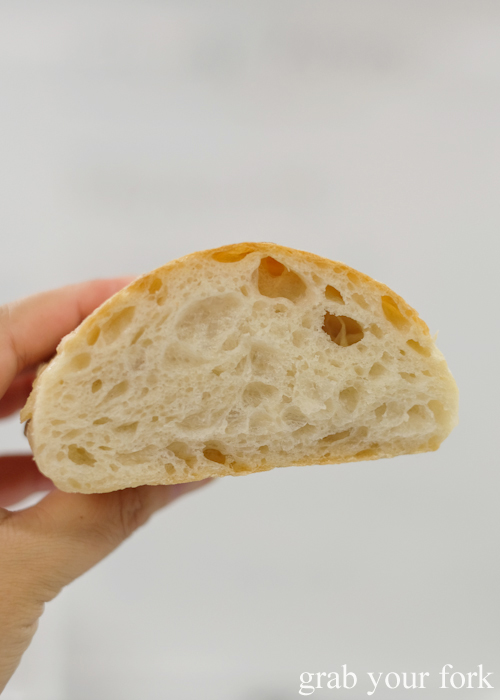
Fluffy holes inside the ciabatta
The biggest hit of the day is the ciabatta. The most important thing about ciabatta is the air bubbles inside, creating a light and airy fluffiness. Eating this fresh from the oven, with its soft interior and slightly crusty edges, is pure bliss.
By the end of the day, each student could take home up to 12 loaves of baked bread. Anything unwanted is donated to charity.
I attended this course after noticing a Facebook share from a friend and I'm so glad I did. It definitely gives you a greater appreciation for bread and the work involved every loaf. I also ate several slices of bread while writing this post. I had to.
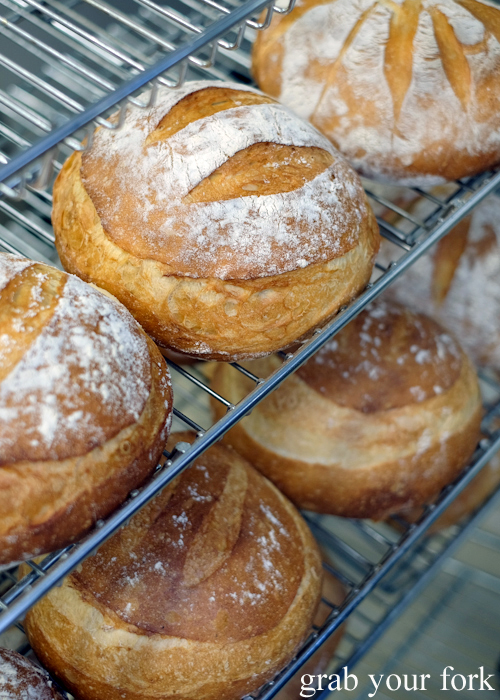
Fully subsidised classes at Sydney TAFE are available for Australian citizens and residents. You can view a list of free courses online as well as follow the Sydney TAFE Hospitality Facebook page for notices on upcoming courses.
I wish I lived closer as I would love to do this course!
ReplyDeleteIt looks awesome!
ReplyDelete